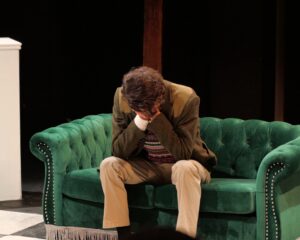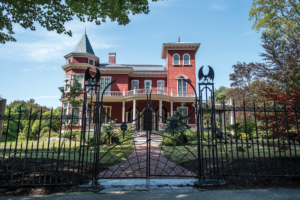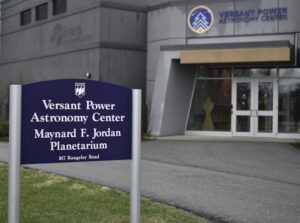On Thursday, Sept. 28, Barbara Kates, a community organizer of Maine-Wabanaki REACH, delivered a presentation titled “Truth, Healing and Change in the Land of Dawn” in Lord Hall at the University of Maine.
More than 30 students, professors and community members gathered together to learn about the history of the Wabanaki people and the current organizations working to rectify their mistreatment. Barbara Kates, a child welfare worker with 20 years of experience, gave a detailed and interactive presentation. She discussed the historical and modern events that have contributed to Maine’s current governmental and cultural relationship to the Wabanaki people.
Kates began the presentation by asking the audience to turn to those sitting next to them and share their name, where they were from and the name of the indigenous people of that region. The goal was not exclusively to evoke the realization that many people don’t know the answer to her last question, but to also remind people of one simple fact.
“Where we were loved and loved others, other people have been loved and loving others long before us,” Kates said.
The Wabanaki people are a confederacy of five native tribes: The Mi’kmaq, Maliseet, Passamaquoddy, Abenaki and Penobscot. Wabanaki roughly translates to “The People of the Dawnland” or “The People of First Light,” to represent the tribes which inhabit Maine and some provinces of Canada.
According to the United States Census Bureau, Native American and Alaskan Natives make up around 2 percent of the country’s population, with nearly 6.6 million people. This ratio between natives and non-natives stays roughly the same when looking at the state of Maine exclusively.
However, when evaluated from county to county, the populations aren’t evenly distributed throughout the state. According to a study by the Carsey Institute, “Washington County has the largest population of Native Americans in Maine at 4.9 percent of the total population. In Penobscot and Aroostook Counties Native Americans make up over one percent of the population (1.2 and 1.7 percent, respectively). For all other counties in Maine, Native Americans make up less than one half of one percent of the population.”
The low population numbers of Native American people can be attributed to the fact that throughout U.S. history, Native people have been repeatedly subjected to every qualification of what the United Nations defines as genocide.
The colonization of Native Americans is frequently covered in school. However, it is less common to learn of the multiple instances of forced removal experienced by Native children. Throughout history Native children have been separated from their families and homes into those of non-natives. This may seem like an archaic form of colonization, but it has appeared in acts of government as recently as The Indian Child Welfare Act (ICWA) of 1978.
According to the National Indian Child Welfare Association, after the enactment of the ICWA nearly 35 percent of all Native children were removed from their families, and 85 percent of these children were placed outside of their homes and communities.
While the ICWA wasn’t the first time that Native families were targeted and separated, it inspired the formation of the Maine-Wabanaki Child Care Truth and Reconciliation Commission (TRC) in 2013. The TRC’s goal is to bring justice and healing to those who were affected by the Indian Child Welfare Act of 1978. By bringing people together to document and discover the stories of Natives affected, we might learn from history and help improve the Maine welfare system.
During her talk, Kates explained the importance of decolonization in our society.
“Colonization creates systems to maintain its power structures,” Kates said. “If we think of these systems broadly, we are actors in these systems…one thing non-natives do to protect themselves is say, ‘that’s horrible. I can’t believe that happened.’ It was horrible. It is horrible. It’s continuing now.”
In closing, Kates left the audience with an inspiring look toward the future and shared ways that each person could bring a positive effect to the movement. Organizations like the Maine-Wabanaki REACH program and the Truth and Reconciliation Commission are currently working together to bring more representation of the Wabanaki people and their history into schools, communities and local government.
The Maine-Wabanaki REACH program believes every person can play a role in decolonization by acting with regard for others’ pasts, presents and futures; by re-discovering cultural roots, and acting in ways that recognize the inherent value of others and our interconnected nature.
“If we are willing to face the truth, to be honest about our history, we can begin to work towards change,” Kates said.
On Saturday, Oct. 28, the Maine-Wabanaki REACH program will be returning to host a day-long workshop in the Woolley Room of the DTAV Community Center. Pre-registration for the event is required, and can be done at mainewabanakireach.org/events. This workshop has already reached over 700 Mainers across the state. In addition to reflecting on history and exploring the potential of the future, this workshop will directly discuss ways that UMaine can take new aim toward a more collaborative future with the Wabanaki people.









